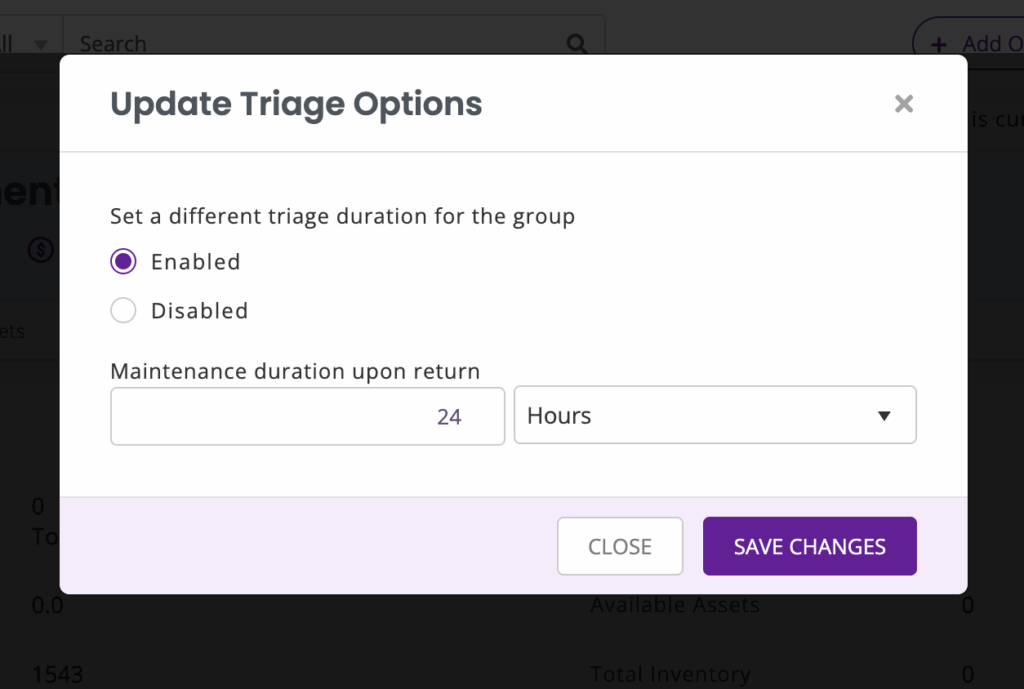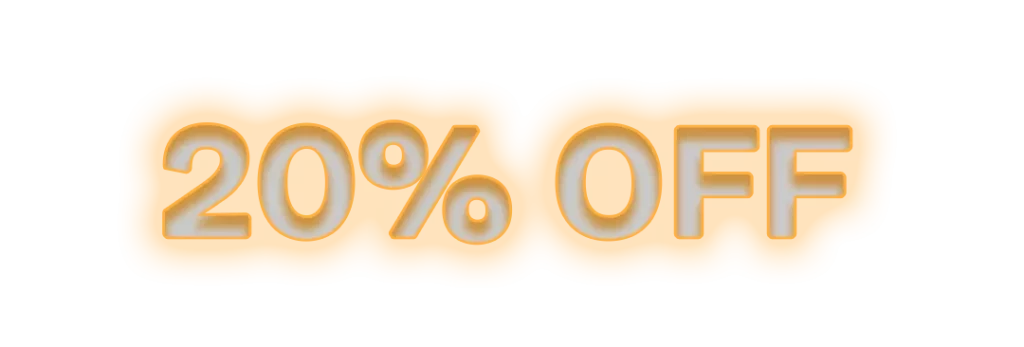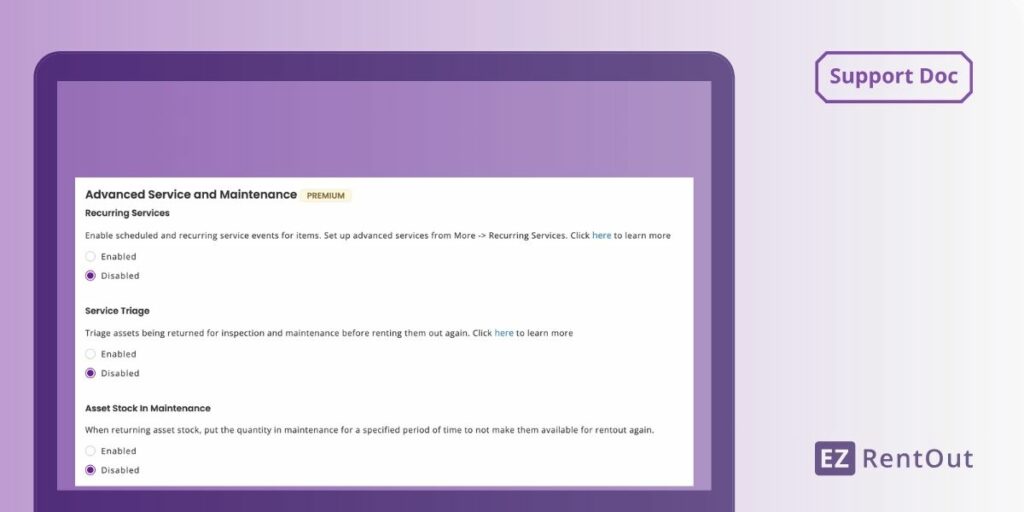A CMMS compliant online rental software help industries plan and schedule equipment and workforce to enhance general plant efficiency and reduce downtime. It has the capacity to track service and maintenance activities – giving evidence to quality reviewers that essential upkeep on basic handling parts was performed appropriately, on time and with the coveted outcomes.
This blog explains how to use the Advanced Service and Maintenance feature in EZRentOut using features like Recurring Services and Service Triage. You can use these features to add value to the basic Services and Maintenance workflow.
Read More: Learn more about using the basic functionality.
1. Recurring Services
You can set recurring services on groups and subgroups using EZRentOut, defining how often you want services to repeat, and establishing start and end dates for effortless maintenance management. To enable this feature, go to Settings → Add Ons → Advanced Service and Maintenance, and enable Recurring Services.

1.1. Adding Recurring Services
Prerequisite for adding a recurring service includes having a group defined consists list of assets that require recurring maintenance. This empowers preventive maintenance within your organization that enables you to lessen the likelihood of an equipment failure. Useful in cases where warranty renewals and regular equipment maintenance is crucial.
Associating Items to a Group: Define a set of items that require recurring maintenance tracking e.g. heavy construction servicing (group) or construction site accessories (subgroup).
Add ‘Heavy Construction Servicing’ as a group, go to Groups, and add items to it. You can do the same when adding a subgroup to a group; go to Items→ Groups → Select a Group → Click ‘Add Subgroup’.

Creating new recurring service: Go to More → Recurring Services → Click ‘Add new recurring service’.

This page requires a title, component (a group or subgroups of assets that require recurring maintenance), repetition starting and ending date, and recurring cycle e.g. repeat every ‘6 months’.
Add a component: This is a group or subgroup of assets that need regular servicing. You can add recurrence to unlimited groups or subgroups. A recurring service can only be created for components that are associated with EITHER a group OR a subgroup.
a. Adding components associated with a group:

b. Adding components associated with a subgroup:

Define repetition criteria: Decide how often the maintenance event will be repeated, and add a start and end date.

Hit ‘create service’, and you’re done.
Select a recurring sequence: Set a recurring service that will be created based on two different use cases.

a. Next service request to be created after completion of the previous service:
This applies when a recurring service is created. Say, either an Excavator in Group ‘Heavy Construction Servicing’ or Forklift in Subgroup ‘Construction Accessories’ is in a maintenance state. To start the next recurring service sequence smoothly, the excavator or forklift must be available again.
This means if a service starts on 5th June and ends on 10th June, then the next service (which is supposed to recur every 6 months) will take place on 10th June 6 months from now instead of 5th June. So you will only be able to see information about the next service on 10th June, and not before that.
However, if you want to be able to view information about the next service immediately, then you can select the checkbox ‘Make the next service visible immediately after the completion of the previous service’.
Note: You’ll have to wait an hour for the next service to become visible.
b. Next service request to be created based on repetition interval:
The next recurring service will be created based on the repetition interval set i.e. after 6 months.
Hit ‘Create Service’, and you’re done.
Note: You can always add new components to an existing recurring service. However, if the service has already begun, the change will come into effect during the next cycle.
Keep Your Rental Equipment Well-maintained
1.2. States of Recurring Service
When a recurring service is created, components added in it goes into the ‘Pending’ state. The state changes to ‘Active’ when the service event is initiated and is marked ‘Completed’ when it ends. These actions must be taken manually by the user.
Pending: In this state, assets associated with the component(s) defined in the recurring service are automatically sent to a Pending Service state.
Active: This means the service has started and the asset is now unavailable.
Completed: Clicking ‘End Service’ will stop recurring service on the groups you have configured under a recurring service.
1.3. Service Actions and Overview
To trigger the ‘Active’ state, you have two options.
1) Asset’s Detail Page → Service → Start Service:

2) Notification Bell → Services → Start Service:
This section is also a great place to get an overview of service events that are active, scheduled, completed, and pending:
Active: Assets that are in maintenance
Completed: Assets with complete maintenance cycle and service records
Pending: Recurring maintenance events
If the Expected Availability Date is highlighted in red, then it means that asset is unavailable due to overdue asset maintenance.
Account Owners and Admins can also enable ‘Service Edit and Deletion’ from Company Settings. Please note that you can only edit the service date and description of ‘active’ service, whereas a ‘completed’ service can both be edited and deleted. However, if deleted, any linked inventory consumed in that service will be replenished.
2. Service Triage
You can also set your account to automatically send assets into maintenance after an item is checked in. This will ensure that equipment is always in the best state before it is checked out again. To enable this, go to Settings → Add Ons → Service Triage. You can set the service period here. This can either be enabled for all groups or for a specific group from its detail page.

Let’s say you’ve enabled and selected Triage Assets of selective groups and subgroups. Go to → Groups. For our example, we have selected the group “Computers”. On the group details page, click on Triage.

An overlay appears to set the duration of maintenance for the group.

This will ensure that asset group – computers will be automatically sent into maintenance for 24 hours each time it is checked in. After 24 hours, the Asset status stays in maintenance until changed to available manually. You can also disable Service Triage on a certain group of assets from the group’s details page.
3. Service Reports
Get insights on your service and maintenance events from Reports. You can find valuable data on recurring maintenance when ‘advanced service and maintenance’ is enabled from Settings → Add Ons.
Unlike traditional software that requires you to download and install updates yourself causing time delays, EZRentOut Computerized Maintenance Management System is updated automatically. Each time you securely log into our CMMS compliant online rental software you’re always using the latest and greatest version.
Share your queries on our CMMS feature
Keep your rental equipment in great working conditions and conduct timely maintenance with CMMS compliant EZRentOut software. It is the leading equipment rental software used by a diverse set of rental businesses worldwide.
For more assistance, drop us an email at support@ezo.io.




![[How-to] Manage Orders in EZRentOut](https://cdn.ezo.io/wp-content/uploads/2015/06/Support-Blog-What-are-Orders-in-EZRentOut.png)

![[How-to] Service and Maintain Items in EZRentOut](https://cdn.ezo.io/wp-content/uploads/2015/05/18102704/Service-and-maintenance.jpg)



